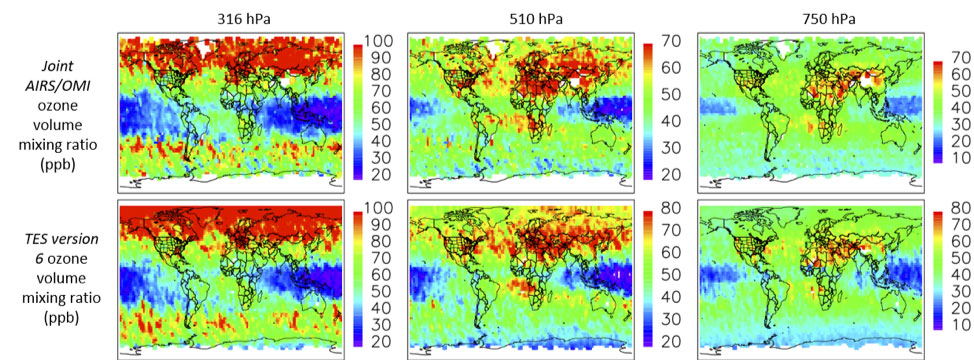Science
Two eyes are better than one: combined AIRS and OMI tropospheric ozone profiles

An innovative new data set focused on ozone profiles combines data collected from two different NASA instruments – AIRS and OMI – that have better accuracy and lower atmospheric sensitivity than either one alone. Thanks to new algorithms that harness the unique advantages of both instruments, this data has similar vertical information as the “gold standard” Tropospheric Emission Spectrometer (TES), but with the potential of much greater spatial coverage. By comparing the AIRS/OMI results with TES observations, we have more confidence than ever that these new data can extend the TES ozone profile record while including critical diagnostic information for ingestion in chemical weather models, including a priori ozone, averaging kernels, and error covariances.
The AIRS/OMI tropospheric ozone data set demonstrates that TES data processing algorithms can be effectively and reliably extended using a multi-spectral retrieval approach. Although officially still considered preliminary, the data is ready to use. The synergy of thermal infrared (TIR) and ultraviolet (UV) radiances provides an improved sensitivity to quantify the vertical distributions of tropospheric composition, a key objective of air quality remote sensing.
The AIRS/OMI data also contains other ancillary information related to our atmosphere, including: cloud optical depth and cloud top pressure (retrieved from thermal infrared spectral region), cloud fraction and cloud top altitude (retrieved from the OMI ultraviolet spectral region), and other surface properties.
The validation results come from the comparison against TES data in global survey mode and against ozonesonde measurements. These results can be compared and validated against other data sets like those from the World Ozone and Ultraviolet Radiation Data Centre (WOUDC) – a global database for ozone data from sondes – and used as a valuable benchmark for comparison to this space based data.
AIRS/OMI Combined Product data and information can be found at the Aura Validation Data Center.
Mission Highlights
Swipe to view more highlights
Loading mission highlights...